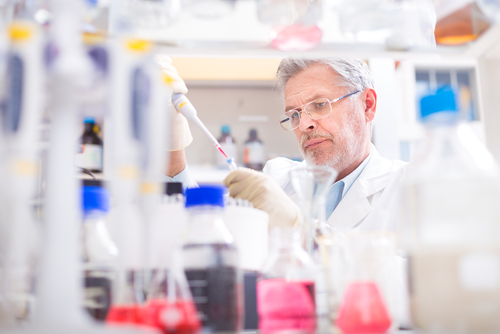Distinct Protein Signatures in Tears and Saliva of Sjögren’s Patients May Aid in Diagnosis

People with primary Sjögren’s syndrome have a distinct protein composition in their tears and saliva when compared to samples from healthy individuals or those with sicca symptoms, whose dryness is not caused by Sjögren’s, a study found.
These proteins may serve as biomarkers for non-invasive and fairly easy tests that aid in diagnosing the condition more accurately, its researchers said.
The study, “Proteomic and histopathological characterisation of sicca subjects and primary Sjögren’s syndrome patients reveals promising tear, saliva and extracellular vesicle disease biomarkers,” was published in the journal Arthritis Research & Therapy.
In addition to the characteristic symptoms of dry mouth and eyes (“sicca”), Sjögren’s syndrome is defined by the presence of autoantibodies — antibodies that target the body’s own tissues.
Some people show these same sicca symptoms, and even with some evidence of inflammation in the tear ducts and salivary glands that looks similar to Sjögren’s, but the lack of autoantibodies precludes a Sjögren’s diagnosis.
Differentiating between these two groups is necessary for proper clinical management. But given the similarity of symptoms, doing so can present a diagnostic challenge.
The researchers behind the new study had previously analyzed saliva and tear samples from primary Sjögren’s syndrome patients and unaffected controls to see if they could find biological markers for the disease. Their idea was that these fluid samples can be collected less invasively than tissue biopsies, and be more easily used in clinical practice.
Here, they employed a similar strategy, but also analyzed samples from people with sicca symptoms but without Sjögren’s syndrome, to explore markers that are truly specific to the disease.
The researchers collected biopsies, tears, and saliva from 10 people with primary Sjögren’s syndrome, 15 people with sicca, and 10 unaffected controls. They then globally analyzed the proteins present in these samples, an approach called proteomics.
They also zeroed in on extracellular vesicles, which are sort of bundles of cellular stuff (proteins, nucleic acids, etc.) that cells release to communicate with each other.
Broadly speaking, there were higher levels of proteins associated with inflammation in samples from Sjögren’s syndrome patients as compared to either sicca and unaffected participants.
Among their findings were higher levels of the protein E3 ubiquitin-protein ligase HUWE1 (HUWE1) in the tear fluid of Sjögren’s patients; this protein is known to be involved in the activity of neutrophils, a type of immune cell known to play a role in the syndrome. Similarly, the protein peptidyl-prolyl cis-trans isomerase FKBP1A (FKBP1A) was found at higher levels in Sjögren’s patients’ saliva; this protein functions in the activation of T-cells, another type of immune cell.
Similar results were also obtained when researchers focused on extracellular vesicles: Sjögren’s patients had distinct inflammatory signatures when compared to either sicca or unaffected participants. For instance, the proteins erythrocyte band 7 integral membrane protein (STOM) and major vault protein (MVP) were found at higher levels in vesicles from Sjögren’s patients’ tears and saliva, respectively. Like HUWE1, these proteins play a role in neutrophil activity.
Other proteins involved in multiple parts of the immune system were also identified as potential biomarkers of Sjögren’s syndrome; the bottom line is that these biomarkers were distinct in patients as compared to people with sicca alone.
“Together, these findings may aid in increasing diagnostic accuracy when evaluating non-[Sjögren’s syndrome] subjects and patients with pSS [primary Sjögren’s syndrome], and monitoring disease progression,” the researchers concluded.
“Future follow-up studies are necessary in order to validate these biomarkers in larger pSS cohorts, in addition to studying the role and expression pattern of these cellular components immunologically,” they added.






